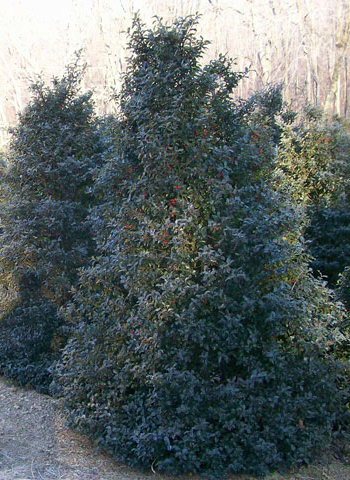The waxy coating on the foliage of Grace Hybrid Holly which is responsible for the extremely attractive sheen is also a protection against salts and pollutants. All plants have limits as to the amounts of salts and pollution they can tolerate before damage occurs. But the Grace Hybrid Holly is an excellent choice in harsh conditions because they have a higher tolerance in both categories.
Bulletin #14, published by the Holly Society Of America explains that, “holly planted in the most polluted areas have done well.”
- “Holly are among the few broad-leafed evergreens which resist high levels of dirt and soot and flourish under city conditions.”
- “Holly have been known to resist such air pollutants as carbon monoxide and sulfur dioxide.”
- “Holly have been found to withstand the intense heat of pavements and buildings.”
The Holly Society of America Also reports on the effect of salt on holly:
“Holly has been proven to rate high amount the ornamentals which are tolerant.”
Gene Eisenbeiss, research horticulturist of the U.S. National arboretum states:
“We have observed no injury on any ilex which we can contribute to air pollution.”
Penn State University observed 0% of susceptibility by American Holly when exposed to .25 ppm ozone for eight hours. Many other trees studied recorded up to 80% susceptibility.:
